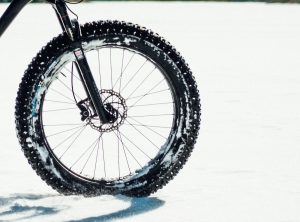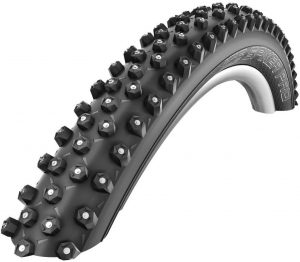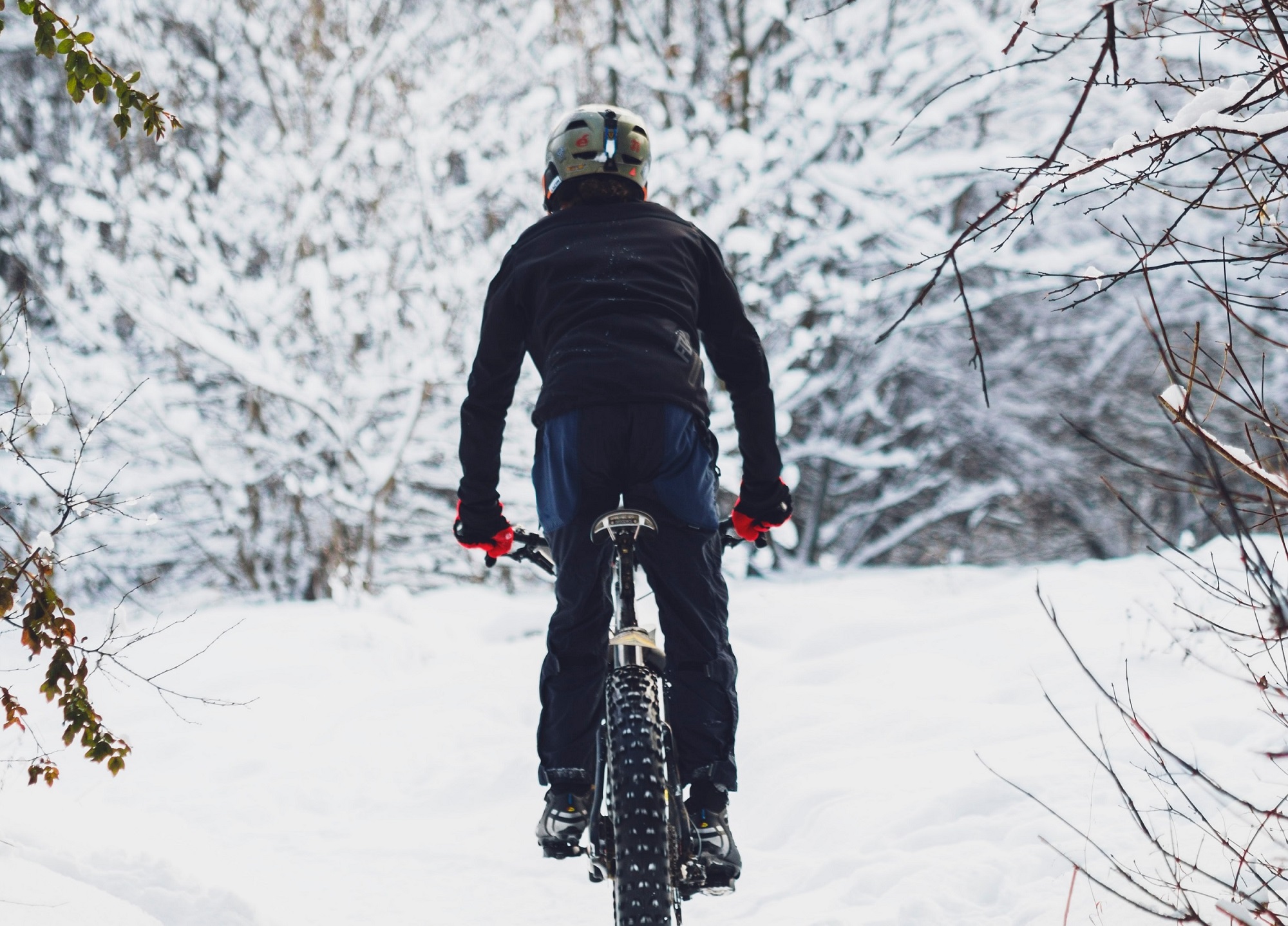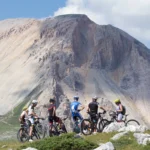Yes, you can absolutely mountain bike in the winter. Biking in the cold and snowy weather brings new challenges but it reaps rewards you just don’t see in warmer weather.
Everybody already knows how magical the winter wonderland is and how beautiful of a ride it is, but if you’re reading this article, I’m sure you’re wondering what tips I can give you to enjoy your winter riding.
So I put together this list of tips and tricks to make the most of you winter bike riding and so you can enjoy all that winter has to offer.
Dress Warmly
When you’re riding in winter, it’s going to be cold out. The key to staying warm is to layer up.
To layer up, you want to have on a good quality base layer as the starting point. I myself have had good luck with Carhartt thermal shirts. I bought mine locally at a tractor store but Amazon has this Carhartt for under $30. I’ve been using mine for more than 5 years and going strong so it’s a good investment and they’re great even when shoveling the driveway.
The key for your base layer is that it wicks away sweat so you stay dry and warm. Champion even makes a nice one you can get often at Target.
On top of the base layer, you want to add layers to keep you warm while you can remove layers if you get too warm. Being too warm and sweating can actually make you colder from the moisture in your clothes. Wet clothes are very dangerous in freezing conditions.
When you first start out, you should be slightly chilly if your layering is correct. After the first few minutes of riding, your body will naturally heat up and you will be warm but not overheating.
Keep Your Hands and Feet Warm
When biking in the winter, your hands and feet are the first things to get cold. As your body temperature drops, your body focuses on keeping your core more warm over your extremities.
For obvious reasons, like holding onto the handlebars, you want to put a little extra focus on keeping your fingers warm.
There are a few options that all can work quite well for keeping your fingers warm:
- Put on latex or rubber gloves before putting on your winter gloves. These gloves create a vapor barrier that does a great job of keeping your fingers warm.
- Heat packs that you activate and then put in your gloves that keep your gloves heater.
- Battery-operated gloves. It might seem funny charging your gloves but having them warming your hands for a few hours while cycling is amazing.
As for boots, you want a boot that is waterproof and will keep your feet nice and warm. A quality set of winter cycling boots can make the difference between an enjoyable ride and a miserable ride. If you want boots that will keep your feet as warm as possible, go for the Lake MXZ303 winter cycling boots. They are full enclosed so no water will get in, and even compatible cleats so they fit most situations.
Be Prepared For Emergencies
You always want to be prepared and have your essentials ready to go when you need them. In fact, I made a list of what you should always have with you in your bike kit. Biking in the winter makes being prepared even more important.
While all of the things in the kit are important, you always want to have a cell phone handy and a rain jacket. If it starts to snow, sleet, or rain while you are out biking, your clothes will get wet and that will get you pretty cold in a hurry. Having a rain jacket to put on and at least keep the water off of you is absolutely essential!
If you’re not sure if you should have something you’re not thinking of, check my personal list of biking gear to bring when biking.
Stay Hydrated
Odd as it may be biking in snow and icy, you need to stay hydrated. The problem is if it’s below freezing, the water may actually freeze.
I normally start with hot water which cools down in a hurry but will stay above freezing for quite some time. For a real treat when it’s cold out, put in some hot chicken broth.
Ride a Fat Bike

The tires on fat bikes at 4 to 5 inches wide are a bit wider than other bike tires. Running them at 10 psi will give you a really good contact patch which will help you work you way through the snow without sinking down into it as much.
Where these tires really hit their groove is on packed snow on well-used trails. They can get a lot of traction, are smooth, and don’t just sink in. Fat tire bikes re getting more and more popular because they make riding on sand in the summer a breeze too. If you’re interested in getting a fat bike for a budget deal, then check out my post on the best fat bikes under $1000 and see if one works for you.
The thing to remember when biking in slippery conditions is that forcing a lot of power through the wheels will just result in tire spin. Much the same way that flooring it in a car on ice will just spin the wheels. You want consistent medium power so that you can move without either making it more slippery or sinking down into grooves in the snow.
Get the Right Tires
While you can ride perfectly well with regular mountain bike tires, on some slippery surfaces or biking uphill you’ll notice you are working harder for less gain. Tires tend to slip, even more so when the rubber is cold.
Snow is slippery, but gaining traction on icy hills is nearly impossible. However, there is a cure for this: studded tires.

Studded tires like these on Amazon actually dig into the ice. It makes those hills that you have to jump off and walk the bike a breeze to ride up like it’s summer. Once I tried them there was no going back and it seems like a no-brainer. These tires are a little heavier (around 40% heavier on average) than non-studded but if you’re in really bad conditions it’s absolutely worth the trade off.
In severe conditions, cars have typically used either the chains to wrap around the tires or metal studded tires which resemble the above bike tires.
I should note that these tires have just a little less traction on paved roads than non-studded. Not enough you’ll need to change them if you bike ride in the winter a lot, but if it’s summer I’d definitely put on non-studded tires.
Set Different Expectations and Goals than Warm Weather
This tip is to mentally prepare for how different winter riding is compared to summer riding.
Mountain biking in the winter takes more energy to move through the snow and with wider tires. It takes more energy to get up hills. The cold alone takes a toll on you.
Sometimes you just can’t get up the hills and have to walk the bike where it feels like you should have made it up easier.
Icy trails take much more work to make it through safely and not fall than the summer counterparts.
The key here is to take your time and enjoy all that winter has to offer. There is just something scenic about riding through snow in the woods and it’s quiet like you’re the only ones in the world.
Enjoy your scenery and enjoy the differences in the ride and obstacles.
Wash Down Your Bike
A mountain bike is made for rugged outdoor use. It can handle slush, snow, road salt, mud, and much more without any issue.
However, it’s always a good idea to wash down your bike after each ride so all of those outdoor conditions don’t cause corrosion and damage your investment. At the very least, wipe it down.
Transporting Your Bike
When the weather is turning cold, you will likely opt to drive your bike to where you are going to bike rather than riding it miles to get there. If this sounds like you, you may want to read more on how to fit a mountain bike in a car to see what options you have for transporting your bike safely.
Have Fun
Remember that the whole point to mountain biking is getting fresh air and enjoying yourself, which are among the way that mountain biking helps you in both mind and body.
Make sure you’re prepared with your bike kit and you’re dressed warmly in layers and enjoy all that winter has to offer mountain bikers!


